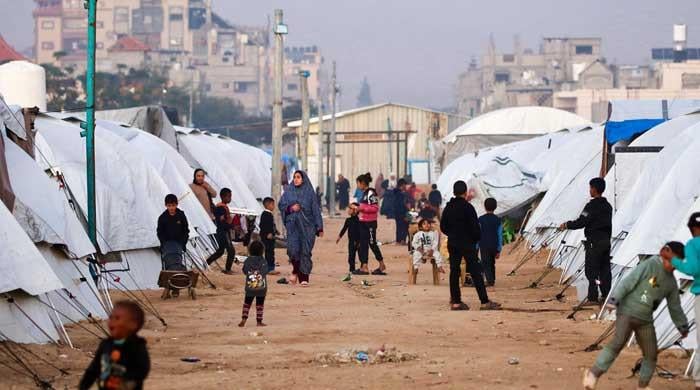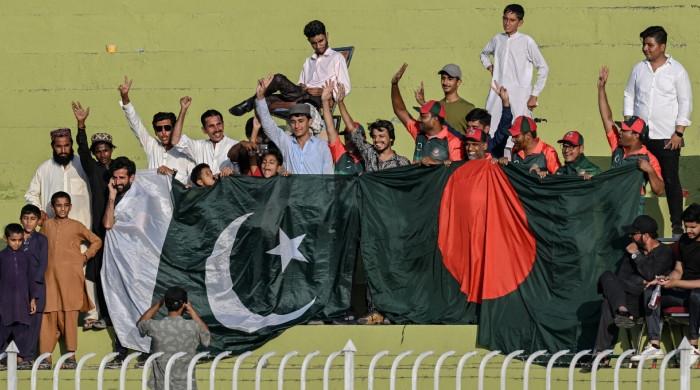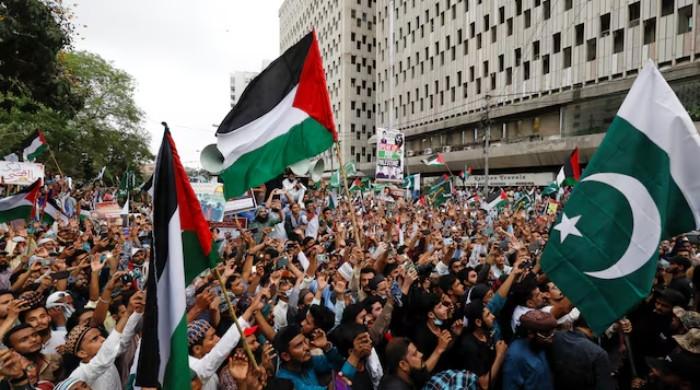Is water the new oil?
Is water a public good or a commodity to generate profits?
May 29, 2019

Conversations have surfaced yet again, regarding the privatization of the state-run Karachi Water and Sewerage Board (KW&SB), in lieu of renewed interests of money lending institutions. Now, Karachi is no stranger to the commodification of public services. The conversion of the Karachi Electric Supply Corporation (KESC) to the K-Electric is an incident not far off in the city’s infrastructural history.
KW&SB, what went wrong?
The KW&SB, one of the largest water distribution and wastewater management utility in the region, often begs its space in electronic and print media for the wrong reasons. The company is censured for providing less-than-satisfactory services to its users. Its alleged inefficiency is due to the lack of infrastructure (particularly to new-emerging settlements), its quality of services, the lack of maintenance of a water infrastructure, a general pro-elite bias in the provision of services, as well as an alleged support to the informal water vending.
In a nutshell, water shortage is amplified by illegal water hydrants, water theft, and illegal connections. Add to that the continued construction of high-rise buildings, in the absence of an expanding civic infrastructure, adding fuel to the fire. Sporadic political interference, organized water theft and the lack of funding are the three main reasons reported by KW&SB officials for its lacklustre performance. This is with no attempt to deny the already impending water crisis which the entire country faces.
Karachi’s water woes
According to the World Bank, Pakistan is amongst the most water-stressed countries in the world. The state-run Pakistan Council of Research in Water Resources (PCRWR) has voiced concern over the possibility of the country running dry by 2025. According to sources, the current availability of water in Pakistan is 1,000 m3 per capita per annum while the optimum figure is 5,000 m3 per capita per annum.
Karachi’s population is 7.7 per cent of the country’s total, and it contributes 15.5 per cent to the GDP, amounting to $4 billion.
To meet the water needs of this growing metropolis, with a population density of 4,246/sq km, water is being supplied to Karachi from sources as distant as the Kenjhar Lake and the Hub River Dam, through a complex network of canals, conduits, siphons, multi-stage pumping and filtration. While, the water provision infrastructure of the KW&SB consists of over 150 pumping stations, 25 bulk water reservoirs on installations, over 10,000 km of pipelines, 64 main nallahs (drainage on main city roads), over 900 million gallons daily of fluid (water and wastewater), billing and recovery of 1.4 million consumers and over 400,000 valves.
For water generation, cities across the globe are divided into two broad categories: a) sources from outside the city, and b) sources within cities or not far from cities.
In Pakistan, out of the 500 plus cities, Quetta, Karachi and Gwadar lie in the first category. The present supply to Karachi is approx 650 mgd (million gallons per day). For the population of over 14 million, the cumulative demand estimate is 1,080 mgd. With a current shortfall anticipated at 430 mgd, 100 mgd additional water is required after every five years to bridge the gap of demand and supply.
Citizen’s resort to self-help
The citizens’ response to the shortage of water ranges from digging wells to boring, differential use of water from multiple sources, purchasing water from private sources and resorting to diverse water bowsers or water tanks. It is difficult to estimate the number of water wells and borings in the city, as the KW&SB is still struggling to regulate the use of sub-soil water. In the absence of any regulations and regulatory mechanisms for subsoil water, the underground water is mined extensively resulting in lowering of water tables in the majority of the localities. This involves private sector companies, neighbourhood water vendors and a substantial number of city dwellers. There is no regulation on the depth of boring conducted, and owing to lack of knowledge, convenience, and reliance on the word of the miner, boring is conducted at unsafe levels of 100 feet to 150 feet; while the water table is considered unsuitable for human consumption at any level less than 200 feet.
Historically, the provision of water through water bowser, commonly known as ‘tankers’, was utilized as an emergency service. Later, due to a variety of reasons it became a viable alternative for the water-starved communities. Conservative estimates reveal that 50,000 tanker trips per day cater to 10 per cent of the water needs of the city.
So now the standard response to the scarcity seems to be to privatize an essential utility.
Such commoditization will result in the capitalization of an otherwise natural public good for money minting by the private sector. This will give drinking water a different meaning for the various strata of society. For the affluent, “drinking water” means premium brands of mineral water; for middle-income groups, it is a wider range of bottled water, boiled water and/or filtered water. And for low-income groups, it is simply tap water, if available at all in the taps.
Privatizing of public services
Under the doctrine of neo-liberal economics, privatization of public services is often cited as a panacea for economic ills. The two hypotheses that govern the diction of privatization are fiscal and efficiency hypothesis. The fiscal hypothesis suggests that governments can obtain the proceeds from privatization and can use it to provide relief to its budget constraints. Whereas, the efficiency hypothesis suggests that State Operated Enterprises (SOEs), since insulated from bankruptcy, are not efficient entities.
Poor performance of public utilities, tight budget constraints and pressure from international lending institutions have encouraged many developing countries to privatize public services. In other words, handing over governance, of an essential service, to the private sector.
The current debate on the privatization of KW&SB uses both the fiscal and efficiency hypothesis. Yet, to fully understand the impact of the privatisation of the KW&SB, on the overall availability of water, we must first understand what the term water governance essentially means.
Deconstructing water governance
Water governance is a range of political, economic, environmental, social and administrative systems, in place to regulate the development and management of water resources in an equitable manner.
The three elements of water governance, from the planning and development perspective, are a) legal, b) administrative and financial c) technical.
The legal element deals with the laws, rules and regulation that dictate the water supply and the distributive network. Here, the provincial government is responsible for framing laws, statues and establishing institutions of water supply.
The administrative element defines the types of institutions, their respective roles, responsibilities and the working of those institutions. While, the financial framework looks at the objectives of water provision services. One conceptual question, when deciding financial matters, is whether water is a public good or a commodity for generation of profits? The accompanying questions that need to be answered are that should the utility provide services to the payers only or will it provide service to the defaulters as well?
A hopeful solution
The solution lies in the reform of the KW&SB by rationalising water tariffs, improving collection and recovery of water bills, more quota of water for Karachi and the sensitisation of consumers, which holds true more so for the commercial sector presently busy in exploiting the ever-dwindling resource.
The need for rationalisation of water tariffs is an urgent one. The KW&SB has around 5,000 bulk consumers and the tariff is Rs. 272/1,000 gallons. This is in sharp contrast to the tankers, whereby 2,000 gallons of water costs consumer Rs. 4,000. Despite, such low tariffs there is a prevalent culture of non-payments across the country.
Karachi and Faisalabad are the only two cities of Pakistan where 25 per cent of the customer pay their water dues. The culture of payment of water bills is roughly non-existent in other cities of Pakistan.
There is no denying the fact that over the years, tankers have become an integral part of the water infrastructure, and there is an increasing need to regulate them for the improvement of their service and for the ease of the consumers.
Colour-coded water tankers, fitted with tracker facilities, can register, implement and report back to water meter-fitted hydrants, significantly streamlining the operations. Smartphone applications for consumers could be a means of helping the end user make their demands to the relevant authority and might ease the otherwise cumbersome operations of tankers.
A public-private partnership model
Any public-private joint venture, of water governance, should have the following principles:
1. Continue with water as a social good
2. Use of sound economics in water management
3. Maintain strong government regulation and oversight
Finally, in case of any privatization, the needs of the lifeline consumer are important to ascertain the basic quantity of water that is to be assured for everyone. Policy decisions such as vesting more financial powers with the managing director of the KW&SB and authorising the board of the company to frame bye-laws will help improve the performance of the KW&SB. It's time for the planners to make a definite choice, is water a public/social good or a commodity?
Raza is a lecturer at Development Studies Program - Department of Architecture and Planning, NED University of Engineering and Technology, Karachi. He can be reached at [email protected].









